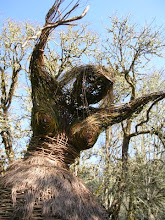Many of us earned our “bookseller badge” the old-fashioned way. We come out of an era of bookselling that drew its ethos from centuries-old traditions. Not much had changed from the time that books went into print, and much of what persisted in terms of trade standards was drawn from the European guilds of the sixteenth century on.
Then came the Internet. Some of us eagerly jumped on the opportunity to trade on the Internet. Books that were unwanted in our local areas were eagerly sought after in other parts of the world. We tried to bring our “old-fashioned” standards and ethics along with us….But!
Since bookselling was among the earliest successful Internet retail ventures, venture capitalists were quick to look for ways to jump into this small but potentially viable marketing scheme. Entrepreneurs quickly saw the potential and issued book after book about how to make money selling books on the Internet. People with little or no background or knowledge of books saw the opportunity in treating reading material as a commodity. Suddenly the old standards were at risk, or had been disregarded altogether. Websites that attempted to retain them were purchased by investors who also saw the medium as a moneymaking opportunity, not as a means to preserve a centuries-long tradition. Today, “traditional” booksellers struggle against a tide of cheaply priced merchandise. It’s market economy – supply and demand. If booksellers cannot embrace the changes wrought by the Internet, they are an endangered species.
The problem is one of making adjustments. That does NOT include lowering any standards. It does mean that ideas about marketing and business methods need to change. Efforts to retain the old models are doomed to failure. We are NOT going to go back to the old ways, at least not any time soon.
I handle a lot of ephemera and I’m always intrigued by advertising from those periods when a technology was in process of change. For many years, ice was a luxury and most of it came from ponds, lakes, and rivers (and sometimes caves) where ice could be cut and transported to markets where it was not otherwise readily available. This was a very lucrative business, and one that reared up in shock when refrigeration methods improved, and local markets could offer artificially produced ice. (The American South was primary in this development.) The “natural ice” marketers tried in vain to claim that theirs was a healthier product (never mind the issue of pollution that were present even then) but they were doomed. Artificial ice was more readily available and a lot less expensive in the areas that provided the largest market.
The advent of the farm tractor threw the makers of horse-drawn plows and equipment into a frenzy of advertising the advantages of the horse over the gasoline engine. (Cheap fuel, recyclable waste, easy maintenance, lower cost, easier on tilth.) The gasoline-powered tractor, however, allowed farmers to produce more work for less labor.
Then came the automobile. It’s interesting in some of the period magazines to see ads for buggies and carriages on the same page with ads for early autos. [See below] There were, of course, attempts to build autos that were propelled by steam, electricity, and gasoline internal combustion engines. [See below] What is most interesting is that the manufacturers who jumped onto the automobile phenomenon were the buggy and carriage makers, as well as bicycle makers. So you can see horse-drawn conveyances from Buick, Studebaker, Cadillac, Dodge, etc., companies that became some of the earliest makers of autos. Bicycle makers who turned to manufacturing autos included Pope and Columbia. In fact, it was a bicycle manufacturer (Stirling Elliot) who solved the problem of wheel-turning ratio, a solution that is still used on cars being manufactured today.
Well, the natural ice industry melted away and the horse-drawn plow still has its advocates, not only among groups such as the Amish but also with some modern farmers. In fact, as the old manufacturers abandoned their trade, and as the old equipment wore out, many small entrepreneurial firms sprang up to offer horse-powered equipment to a new generation of farmers who want to pursue this method. There is now an annual trade show called Horse Progress Days (they have a nice website) where modern horse equipment manufacturers can showcase their wares.
And yes, there are still buggy makers, and buggy whip makers, catering to a specialized market. And the horse population is larger today than it ever was.
All of which is to point out that bookselling has changed radically with the introduction of the Internet. Booksellers who cling to the traditional models are going to have to change perspective if they don’t want to follow the path of the natural ice merchants. Those who can convert their methods – as the buggy and bicycle manufacturers did – to take advantage of the new technology may prevail. There is still room for the specialist, and brick and mortar stores that have something special and personal to offer their customers (so long as they are in appropriate locations) can survive, so long as they accept a modest market share. The generalist Internet bookseller, however, either needs to develop a specialized market niche, or to adapt to the realities of an online marketplace.
Friday, February 8, 2008
A Personal Review of the Bookselling Trade
Labels:
automobile,
books,
bookselling,
buggies,
horses,
steam
Subscribe to:
Post Comments (Atom)




1 comment:
I think that this is an interesting, well thought out, post but I wonder if you could elaborate on you final sentence, 'The generalist Internet bookseller, however, either needs to develop a specialized market niche, or to adapt to the realities of an online marketplace.' It seems to me to be a contradiction in terms.
Post a Comment